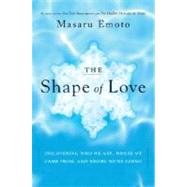
Dr. MASARU EMOTO is a graduate of the Yokohama Municipal University and the Open International University as a doctor of alternative medicine. His previous book, The Hidden Messages in Water, has sold more than 600,000 copies worldwide. He lives in Tokyo, Japan, and frequently travels to the United States to speak about his work.
| Preface | p. VII |
| The Shapes of Love in Water | p. 1 |
| Who Are You? | p. 27 |
| The Beginning of Love | p. 37 |
| The Journey of Water | p. 59 |
| The Power of Prayer | p. 111 |
| Tune in to the Vibration of Love | p. 125 |
| Epilogue | p. 147 |
| Table of Contents provided by Ingram. All Rights Reserved. |
The New copy of this book will include any supplemental materials advertised. Please check the title of the book to determine if it should include any access cards, study guides, lab manuals, CDs, etc.
The Used, Rental and eBook copies of this book are not guaranteed to include any supplemental materials. Typically, only the book itself is included. This is true even if the title states it includes any access cards, study guides, lab manuals, CDs, etc.
Excerpted from The Shape of Love: Discovering Who We Are, Where We Came from, and Where We're Going by Masaru Emoto
All rights reserved by the original copyright owners. Excerpts are provided for display purposes only and may not be reproduced, reprinted or distributed without the written permission of the publisher.